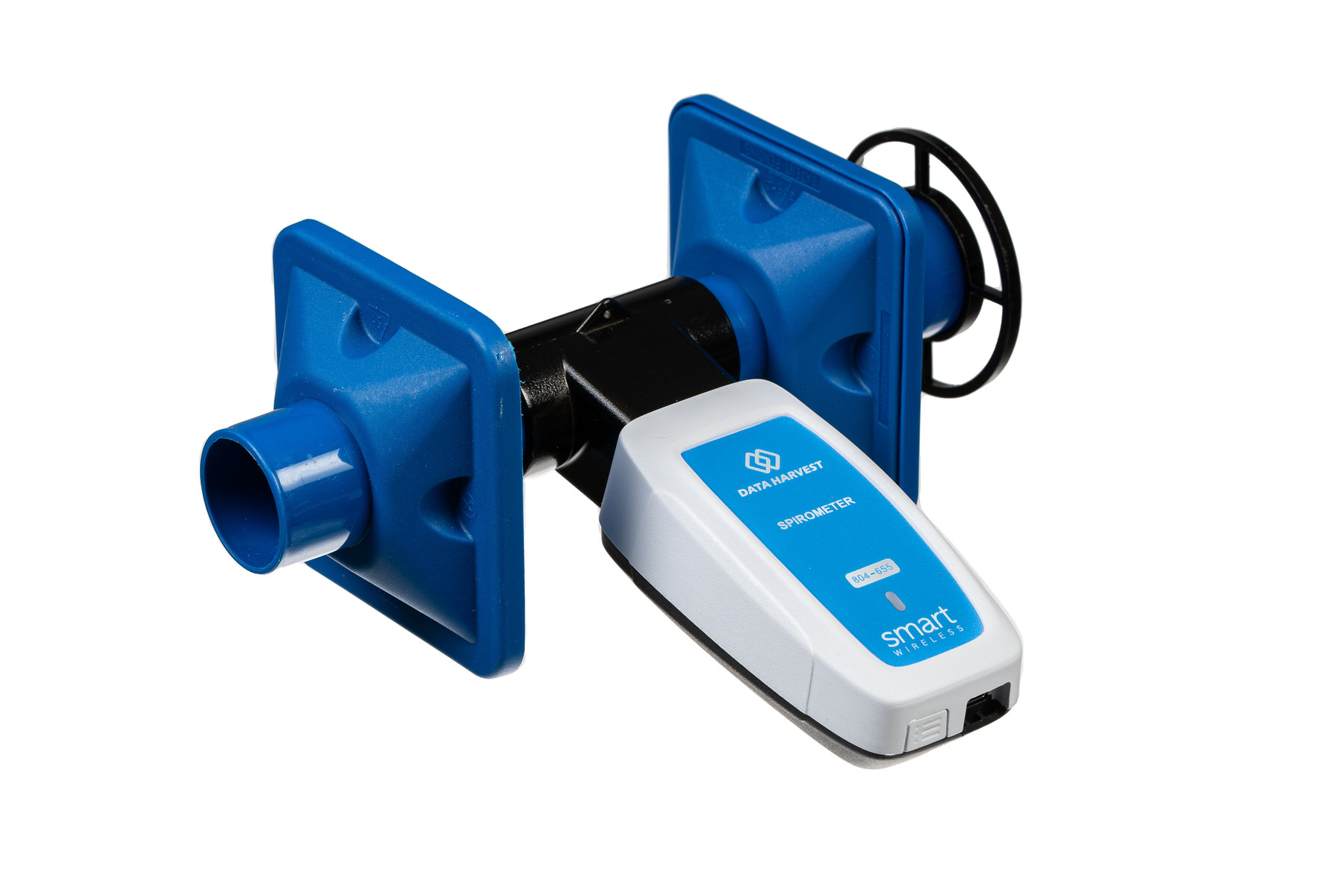Introduction
Thank you for purchasing the Smart Wireless Spirometer. We pride ourselves on producing high quality products that meet with the demands of the busy classroom environment. If you have any problems using this sensor, please read this documentation in full before contacting the Data Harvest support team.

The Smart wireless Spirometer is a differential pressure transducer that interfaces to a pair of flow heads to measure air flow rate. The sensor works by measuring pressure drop across a reference flow resistance. An embedded microprocessor in the Spirometer converts the pressure readings into air flow rate.
The user can choose to see data from the sensor as flow, volume, corrected volume, breathing rate or change in pressure.
Alternatively the air flow data can be converted to volume using a simple function in the software after data collection.
The Spirometer is supplied with a nose clip, four flow heads (one attached and three for test subjects) and a circular guard for the ‘fixed’ flow head (to prevent it being used).
A flow head contains an antibacterial and antiviral filter to lessen the possibility of cross contamination between subjects. Two flow heads are attached to the Spirometer during use; one is kept fixed in place and the other is the test subject’s flow head. To minimise the danger of cross contamination, the flow head used by the test subject is only for their own use and should be regarded as a ‘disposable’ item.
Note: The air flow rate measurement is only valid if two flow heads are fitted to the Spirometer during use.
Replacement packs of 10 flow heads (Product No. 3269) and 5 nose clips (Product No. 3264) are available from Data Harvest. Contact sales for further information.
Disclaimer
The Smart Wireless Spirometer is sold for the purpose of teaching and educational instruction. It is not and has not been designed to be a diagnostic tool. The results are illustrative only; any information gained from the use of this apparatus must not be used as the basis for any medical or clinical diagnosis.
Read the instructions before use. Students should be supervised at all times.
Follow your local safety guidelines. It is the responsibility of the tutor to ensure that individuals using this apparatus are healthy and have no history of respiratory or cardiovascular problems. The students must be reassured about the medical validity of the results. Respiratory tests can be challenging; limit the number of tests in a session and take care that an individual is not overstressed by the tests.
WE DO NOT RECOMMEND THE USE OF THIS SENSOR WITH INDIVIDUALS UNDER THE AGE OF 10.
Overview
The Smart Wireless Spirometer is USB and Bluetooth compatible. Using Bluetooth, a sensor can connect to mobile devices, tablets, laptops, and desktops.
The sensor has several ranges (flow (default), volume, adjusted volume, cyclic volume, breathing rate, differential pressure). Any range can be selected on its own or selected alongside any other range.
The range required is set in the Devices icon of the EasySense software.
The Spirometer is used to measure changes in the volume of the inhaled and exhaled air. The total volume of the lung can be calculated from various breathing processes and calculation of the anatomical dead space.
The spirometer integrates the flow to produce volume (i.e. a flow of 1 l s-1 must produce 1 litre of volume in one second and 2 litres of volume in 2 seconds etc.). Any value of the flow that differs from zero at the start will become “integrated” into the volume and will be seen in the final data as a slope in the data. A calibration function and tare function are present to allow the no flow through of the Spirometer become the zero base line to reduce this effect.
Additionally, the adjusted volume range uses mathematics to bring the data back to effective zero after each breathing cycle.
